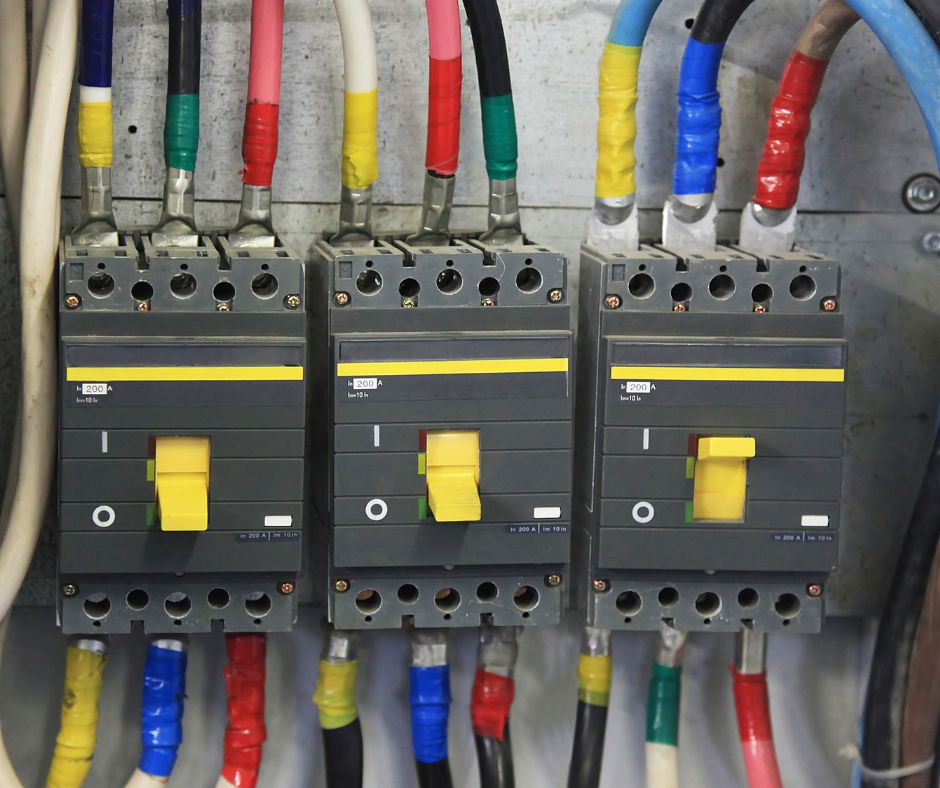The Critical Role of Electrical Insulation Tape in Ensuring Safety
Electrical insulation tape is an essential element in the protection and insulation of various types of electrical wires and cables. Commonly referred to as insulating tape, this crucial tool significantly contributes to safety in both professional and residential settings. By effectively preventing electrical shorts and providing protection against moisture, dust, and physical wear, this tape is vital for maintaining the operational integrity and safety of electrical systems. Recognizing its importance can help you avert potential hazards, ensuring your workspace remains organized and efficient while promoting safe electrical practices.
Electrical insulation tape comes in an extensive variety of sizes, lengths, and colors, each crafted from diverse materials designed for specific applications. These options not only enhance the effectiveness of insulation but also allow for easy identification and organization of cables through color-coding. Employing different colors can streamline your electrical work processes, facilitating swift identification of specific wires, which ultimately boosts your productivity and enhances overall organization.

Essential Considerations for When Electrical Tape May Melt
Indeed, electrical tape can melt under specific conditions. In this section, we will explore the temperature thresholds associated with electrical tape, review the scenarios that may lead to melting, and highlight critical signs of overheating that should be monitored closely. A thorough understanding of these factors is paramount for the safe and effective application of electrical insulation tape in various settings.
Understanding the Temperature Limits of Electrical Tape for Safe Applications
Like many materials, electrical tape possesses defined temperature limitations that must be recognized for its safe use. Most standard electrical tapes can endure temperatures up to approximately 80°C; however, some heavy-duty variants are engineered to withstand slightly higher temperatures. When environmental conditions exceed these limits, the structural integrity of the tape could begin to deteriorate, which may lead to potential failures and safety hazards.
As temperatures increase and approach the upper limits, the effectiveness of electrical tape declines. This degradation can manifest in various forms, such as melting, a sticky texture, or in severe cases, complete failure of the tape. Being cognizant of these temperature limits is crucial for maintaining safety and performance in electrical applications, ensuring that your projects are executed without unnecessary risk.
For environments with extreme heat, consider utilizing high-temperature variants of electrical tape. For instance, heat-resistant tape, made from materials like fiberglass or silicone, can endure temperatures of up to 200°C or higher, making it an ideal choice for applications exposed to intense heat.
Also Read: Keep Your Pets Safe Around Electricity
Get Your Quote Now!
Ask About Our FREE Electrical Inspections

Common Causes of Electrical Tape Melting: Key Factors to Know
Electrical tape can melt due to several reasons, primarily originating from exposure to extreme heat. Understanding these causes is vital for ensuring safe and efficient usage. Below are some prevalent reasons contributing to tape melting:
The Impact of Excessive Heat Exposure on Electrical Tape Performance
The most significant factor leading to the melting of electrical tape is its proximity to high temperatures. If the tape is situated near hot surfaces, engines, or components that generate heat, it may begin to soften, bubble, or even melt entirely. Additionally, electrical systems such as power circuits can produce more heat than the tape is designed to handle, particularly during malfunctions or overload situations.
Therefore, when utilizing electrical tape in areas prone to high temperatures, it is essential to verify the temperature ratings of the tape to mitigate potential failures and uphold safety standards.
The Effects of Environmental Degradation on Electrical Tape Longevity
Electrical tape is not built to last indefinitely. Over time, both the adhesive and the tape material can degrade, particularly when exposed to UV light, moisture, or harsh environmental conditions. This degradation can significantly reduce the insulating properties of the tape. As the tape ages, it tends to become less effective, making it more susceptible to melting even at lower temperatures than it would typically withstand.
Regular wear and tear are normal aspects of the lifecycle of electrical tape. Consequently, it is crucial to routinely inspect the tape for signs of aging or damage to ensure ongoing safety and performance.
The Dangers of Incorrect Electrical Tape Application Techniques
Using electrical tape under unfavorable conditions can lead to premature failure. For instance, if the tape is wrapped too tightly, subjected to friction or excessive heat, or over-stretched during application, its effectiveness may be compromised. Furthermore, wrapping the tape around sharp edges or applying it to components prone to overheating, such as light bulbs or electrical outlets, can result in complications unless the tape is specifically rated for those situations.
Also Read: 10 Ways to Save On Power And Energy Costs
Recognizing Key Signs of Overheating Electrical Tape
If you suspect that your electrical tape is overheating, there are several important indicators to look for. Below are the most common signs that your tape may be melting or suffering from excessive heat:
Detecting a Sticky or Tacky Texture in Overheated Electrical Tape
A noticeable alteration in texture, particularly a sticky or tacky feel, is often one of the initial signs of melting electrical tape. This change can serve as an early warning that the tape may no longer be providing adequate insulation.
Identifying Discoloration as a Sign of Heat Damage
Electrical tape that has overheated may show significant discoloration. You might observe a transformation from its standard black or colored appearance to shades of brown, dark gray, or even black. This change occurs as heat causes the tape’s PVC or other materials to break down. Recognizing this issue early can prevent further damage to your wires; if left unaddressed, it can lead to melting or even create fire hazards.
Observing Bubbling or Distortion as Warning Signs of Excessive Heat
If electrical tape begins to bubble, distort, or warp, it signals that heat is negatively impacting its structure. This typically occurs when heat causes the adhesive or plastic layers to separate or degrade. The surface may appear wavy or uneven, indicating that temperatures are exceeding safe levels. Upon noticing these bubbles, it is wise to consult your electrician for a comprehensive evaluation.
Recognizing a Burning Smell as a Serious Warning Sign
A burning smell near electrical tape is a critical warning sign that should not be ignored. This odor may resemble melting plastic or burning rubber. When excessive heat causes the adhesive to break down, the resultant fumes can be concerning. Do not overlook this warning. If you notice a burning smell, it could signify that the tape is on the verge of melting or even catching fire.
Visible Smoke as a Major Indicator of Critical Overheating
If you see smoke emanating from the electrical tape, it is a clear indication that the temperature levels have far surpassed what the tape can tolerate. Smoke is a strong signal indicating that the tape has likely begun to melt or may even be igniting. At this critical juncture, it is crucial to turn off the power source immediately and contact your electrician for assistance.
Remember – Never use water to extinguish an electrical fire. Instead, utilize a CO2 fire extinguisher for safety.
Safety Steps to Follow if Your Electrical Tape Melts
In the event that your electrical tape melts, the first step is to disconnect any power sources or turn off any equipment to ensure safety.
Prioritizing safety is essential, as electrical hazards can pose severe risks to both life and property.
Once you have confirmed that the area is safe, always consult your electrician for professional guidance. If a professional installed the tape, they may need to inspect the area for any underlying electrical issues that could have contributed to the problem, ensuring comprehensive safety and functionality.
Exploring Alternatives to Electrical Tape for High-Temperature Applications
If your work frequently involves environments where temperatures exceed the limits of standard electrical tape, it is wise to consult your electrician about suitable alternatives. Here are several options worth considering:
- Heat-resistant silicone tape: This type of tape is specifically engineered to endure elevated temperatures and is perfect for applications where heat is a major concern.
- Fiberglass tape: A robust option that can handle extreme temperatures without compromising performance or safety.
- Mica or ceramic insulation: For the utmost level of heat protection, specialized insulations like mica or ceramic are excellent choices.
Key Insights on the Risks Associated with Melting Electrical Tape
In summary, electrical tape can indeed melt, primarily due to excessive heat exposure. Understanding the temperature limits of your tape and ensuring you select the appropriate type for your specific application are crucial steps in preventing potential issues.
By being attentive to signs such as discoloration, stickiness, or unusual odors, you can take prompt action to mitigate risks. Always prioritize safety and do not hesitate to reach out to your local electrician for expert advice when needed.
Get Your Quote Now!
Ask About Our FREE Electrical Inspections

The Article: Does Electrical Tape Melt? Here’s What You Need to Know first appeared on https://writebuff.com
The Article Electrical Tape Melting: Essential Facts You Should Know Was Found On https://limitsofstrategy.com


This post highlights an often-overlooked aspect of electrical safety—insulation tape’s role in preventing hazards. While it’s easy to underestimate such a simple tool, I’ve seen firsthand how neglecting proper insulation can lead to tragic consequences. A friend of mine experienced a minor electrical fire due to frayed wires that weren’t secured properly. It made me realize how critical awareness and education around these materials are.
You’ve touched on such an important point about electrical safety and the often underestimated role that insulation plays. Your experience with your friend’s minor fire really drives home the potential risks we sometimes overlook. It’s easy to think of insulation tape as just another tool in the toolbox, but as you know, it serves a critical function in ensuring safety.